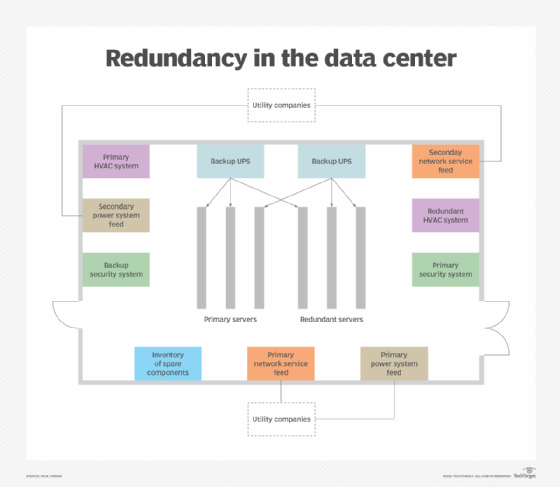Redundancy Pay If Company Goes Bust: Comprehending Your Entitlements in the UK
Discovering the Operational Dynamics of Company Redundancy and Its Long-Term Sustainability

Redundancy Strategies for Organization Continuity
In order to make sure continuous operations, businesses need to apply effective redundancy techniques for organization continuity. Redundancy in this context refers to the replication of critical elements or features within a system to minimize the impact of prospective failings. By including redundancy strategies, organizations can boost their resilience versus disruptions triggered by numerous factors such as natural calamities, equipment failures, or cyber-attacks.
One usual redundancy technique is the implementation of back-up systems and data storage space remedies. This includes creating duplicates of necessary information and systems that can be turned on in situation of a primary system failure. Additionally, organizations can establish repetitive interaction channels and power resources to keep connection and procedures throughout unanticipated events.
Furthermore, cross-training employees to carry out multiple roles within the company can function as a valuable redundancy strategy. If key workers are unavailable due to disease or other factors, this guarantees that vital tasks can still be carried out also. On the whole, reliable redundancy strategies are essential for companies to maintain functional connection and lessen the influence of possible interruptions.
Influence of Redundancy on Organizational Durability
Given the important role redundancy approaches play in making sure business continuity, checking out the influence of redundancy on organizational durability comes to be crucial for recognizing the holistic functional characteristics of a company. Redundancy, when tactically carried out, can significantly contribute to enhancing an organization's durability in the face of unanticipated obstacles.
In addition, redundancy can cultivate development and imagination within an organization as employees really feel equipped to take calculated threats, understanding that there is a security net to sustain them in situation of failure. Overall, the influence of redundancy on organizational resilience is profound, forming the long-lasting sustainability and success of a firm.
Stabilizing Efficiency and Versatility in Redundancy
Accomplishing a harmonious stability between operational performance and adaptive versatility is a critical obstacle in the calculated implementation of redundancy within organizations. As well her comment is here much versatility without a solid functional foundation can result in inefficiencies and incongruity.
To stabilize performance and adaptability in redundancy preparation, companies have to thoroughly evaluate their operational demands, market dynamics, and critical goals. Ultimately, discovering the ideal balance in between efficiency and adaptability is vital for building a lasting and durable company in the face of unpredictability.
Long-Term Sustainability Through Redundancy Preparation
To ensure long-lasting viability and stability, companies should purposefully align their redundancy preparation with long-term sustainability goals, consequently harmonizing functional efficiency with adaptive versatility. Business ought to view redundancy not as a reactive solution to immediate issues yet as a positive approach for lasting success.

Aggressive Measures for Sustainable Business Procedures
Exactly how can business proactively improve their operational sustainability for long-term success? Implementing aggressive actions is important for companies aiming to ensure sustainable procedures.
In addition, cultivating a culture of constant enhancement and knowing within the organization can enhance flexibility to transforming market problems and client demands. Urging staff member participation in decision-making processes and providing possibilities for specialist advancement can improve morale, view it productivity, and total efficiency. Developing clear goals, keeping an eye on crucial efficiency indications, and routinely examining progression are vital elements of aggressive sustainability monitoring.
Teaming up with distributors, clients, and various other stakeholders to promote lasting methods throughout the supply chain can create a ripple result of positive influence - redundancy pay if company goes bust. By taking positive actions towards operational sustainability, firms can develop resilience, drive innovation, and secure their lasting success in an ever-evolving organization landscape
Final Thought

In the realm of business monitoring, the calculated deployment of firm redundancy stands as an essential yet elaborate practice that demands a delicate balance in between functional efficiency and lasting stability. By exploring the operational dynamics that underpin firm redundancy and examining its wider ramifications for business durability and adaptability, check my site a nuanced understanding of just how redundancy techniques can shape the future trajectory of a firm begins to unfold.Offered the critical duty redundancy methods play in making sure organization connection, checking out the impact of redundancy on organizational strength becomes essential for comprehending the all natural operational dynamics of a firm. Overall, the effect of redundancy on business strength is profound, shaping the long-lasting sustainability and success of a firm.
In conclusion, comprehending the functional characteristics of company redundancy is vital for ensuring long-term sustainability.